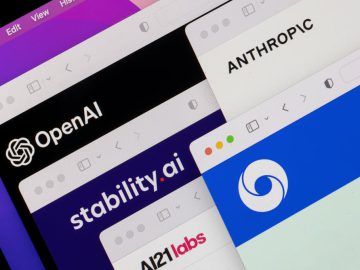As artificial intelligence (AI) powers a growing array of technologies, from chatbots to self-driving cars, a bottleneck has emerged: a shortage of high-quality data to train these sophisticated systems.
Data scarcity, as it’s known in the industry, threatens to slow the rapid pace of AI advancement.
The issue is particularly acute for large language models (LLMs) that form the backbone of AI chatbots and other natural language processing applications. These models require vast amounts of text data for training, and researchers say they’re running low on suitable new material to feed these voracious algorithms.
In commerce, the data scarcity problem presents both challenges and opportunities. eCommerce giants like Amazon and Alibaba have long relied on vast troves of customer data to power their recommendation engines and personalized shopping experiences. As these low-hanging fruit are exhausted, companies struggle to find new high-quality data sources to refine their AI-driven systems.
This scarcity is pushing businesses to explore innovative data collection methods, such as leveraging Internet of Things (IoT) devices for real-time consumer behavior insights. It’s also driving investment in AI models that can make more accurate predictions with less data, potentially leveling the playing field for smaller retailers who lack the massive datasets of their larger competitors.
The Data Quality Conundrum
While the internet generates enormous amounts of data daily, quantity doesn’t necessarily translate to quality when it comes to training AI models. Researchers need diverse, unbiased and accurately labeled data — a combination that is becoming increasingly scarce.
This challenge is especially pronounced in fields like healthcare and finance, where data privacy concerns and regulatory hurdles create additional barriers to data collection and sharing. In these sectors, the data scarcity problem isn’t just about advancing AI capabilities; it’s about ensuring the technology can be applied safely and effectively in real-world scenarios.
For example, AI models designed to detect rare diseases often struggle in healthcare due to a lack of diverse and representative data. The rarity of certain conditions means there are simply fewer examples available for training, potentially leading to biased or unreliable AI diagnostics.
Similarly, AI models used for fraud detection or credit scoring in the financial sector require large amounts of sensitive financial data. However, privacy regulations like GDPR in Europe and CCPA in California limit the sharing and use of such data, creating a significant hurdle for AI development in this field.
Searching for Solutions
As easily accessible, high-quality data becomes scarce, AI researchers and companies are exploring creative solutions to address this growing challenge.
One approach gaining traction is developing synthetic data — artificially generated information designed to mimic real-world data. This method allows researchers to create large datasets tailored to their specific needs without the privacy concerns of using actual user data.
Nvidia, for instance, has invested heavily in synthetic data generation for computer vision tasks. Their DRIVE Sim platform creates photorealistic, physics-based simulations to generate training data for autonomous vehicle AI systems. This approach allows for the creating of diverse scenarios, including rare edge cases that might be difficult or dangerous to capture in real-world testing.
Another strategy involves developing data-sharing initiatives and collaborations. Organizations are working to create large, high-quality datasets that can be freely used by researchers worldwide. Mozilla’s Common Voice project, for example, aims to create a massive, open-source dataset of human voices in multiple languages to improve speech recognition technology.
In healthcare, federated learning techniques are being explored to train AI models across multiple institutions without directly sharing sensitive patient data. The MELLODDY project, a consortium of pharmaceutical companies and technology providers, uses federated learning to improve drug discovery while maintaining data privacy.
The data scarcity problem drives innovation in AI development beyond data collection. Researchers are increasingly focusing on creating more efficient AI architectures that can learn from smaller amounts of data.
This new paradigm spurs interest in few-shot, transfer and unsupervised learning techniques. These approaches aim to develop AI systems that can quickly adapt to new tasks with minimal additional training data or extract meaningful patterns from unlabeled data.
Few-shot learning, for instance, is being explored in image classification tasks. Research from MIT and IBM has demonstrated models that can learn to recognize new objects from just a handful of examples, potentially reducing the need for massive labeled datasets.
Transfer learning is another promising approach. In this approach, models are pre-trained on large general datasets and then fine-tuned for specific tasks. Google’s BERT model, widely used in natural language processing tasks, employs this technique to achieve high performance across various language tasks with relatively little task-specific training data.
Unsupervised learning methods are also gaining attention as a way to leverage the vast amounts of unlabeled data worldwide. OpenAI’s DALL-E generates images from text descriptions and uses unsupervised learning to understand the relationship between text and images without requiring explicitly labeled data.
The Impact on AI Development
The data scarcity challenge is reshaping the AI development landscape in several ways. For one, it’s shifting the competitive advantage in AI from simply having access to large datasets to having the capability to use limited data efficiently. This could level the playing field between tech giants and smaller companies or research institutions.
Additionally, the focus on data efficiency is driving research into more interpretable and explainable AI models. As datasets become more precious, there’s an increasing emphasis on understanding how models use data and make decisions rather than treating them as black boxes.
The data scarcity issue also highlights the importance of data curation and quality control. As high-quality data becomes scarcer, there’s a growing recognition of the value of well-curated, diverse and representative datasets. This is leading to increased investment in data curation tools and methodologies.
As the AI industry grapples with data scarcity, the next wave of breakthroughs may not come from bigger datasets but from smarter ways of learning from the data already available. AI researchers are being pushed to develop more efficient, adaptable and potentially more intelligent systems in facing this data drought.
See More In: AI, AI models, AI training, artificial intelligence, data, data scarcity, data training, digital transformation, GenAI, generative AI, Innovation, large language models, LLMs, News, PYMNTS News, Technology





